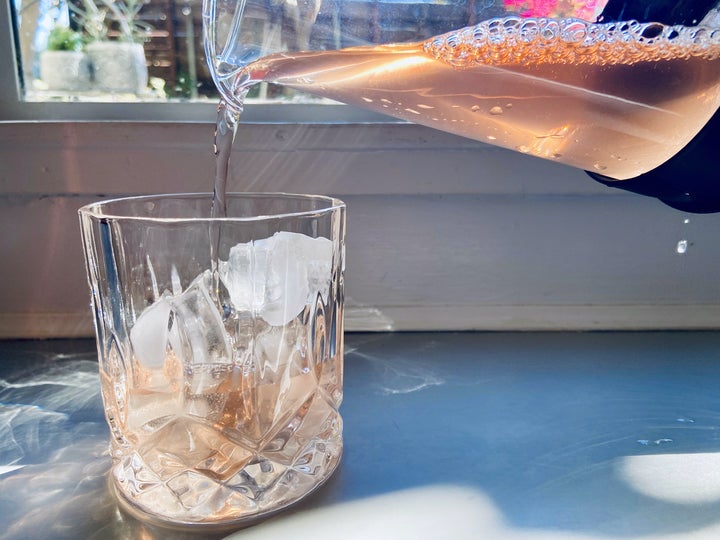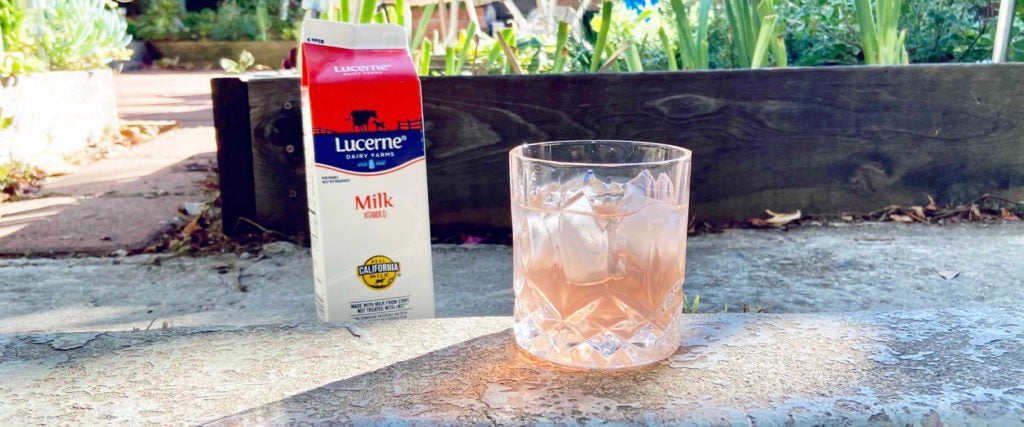I can still remember the night I discovered milk punch. It happened six years ago, when I stumbled into a luxurious-looking restaurant in Downtown Los Angeles — the kind of place that has extravagant leather banquettes, 1920s chandeliers and diners in black bandage dresses.
Flipping through the (leather-bound) menu in an awkward corner of the crowded bar, I spotted it: “English Milk Punch,” featuring ingredients like funky Smith & Cross rum, bourbon, green tea, tropical fruit and, strangest of all, something called a “milk clarification.” If I had been more sober, I probably would’ve asked about this unseemly combination of tastes. But I wasn’t, so I stuck my hand up and blurted it out.
What arrived at the table didn’t look like any punch I had seen. Nor did it look like any dairy product on Earth. Sitting in front of me was a beautiful cut crystal glass full of what looked like a martini, plus a little glass sidecar of more clear liquid. Where was the punch? Where was the milk?
I took an uncertain sip. What flooded my mouth was the flavor of pineapple and warm spices, then wood-aged liquor, molasses, fresh-cut grass and a crisp sweetness. There was no sting of alcohol, no astringent finish, no bitter clash of ingredients — just a smooth drink that went down like the fruit juice of my adult dreams. This felt like tiki in a velvet tux, and I liked it.
That “English Milk Punch” was the brainchild of talented bartender Michael Lay, but it opened my half-drunk eyes to the miraculous world of clarifying cocktails with whole milk, a trick that hinges on the chemistry that unfolds when you hit milk proteins with acidic ingredients like citrus juice and tea. The technique stretches back to the 1700s, and many bartenders (including Lay) are these days referencing the punch recipes found in Jerry Thomas’ famous Bar-Tenders Guide, published in 1862. Cocktail historian David Wondrich helped unearth these recipes for his 2010 book Punch, and he describes the drink as a “plush and seductive punch that practically drinks itself.”
No wonder that milk punch was set to rise as one of the hottest cocktail trends of the year — well, at least until the pandemic hit and all the bars shuttered. As for taking matters into my own hands, I figured that milk punch was too complicated, too time-consuming and too expensive to make at home.
Turns out, I was wrong.
Milk punch requires some planning, and it won’t come together as quickly as your afternoon vodka-soda. But the payoff feels like a magic trick, and you’ll impress anyone you hand a glass to.
The Best Milk Punch Recipe
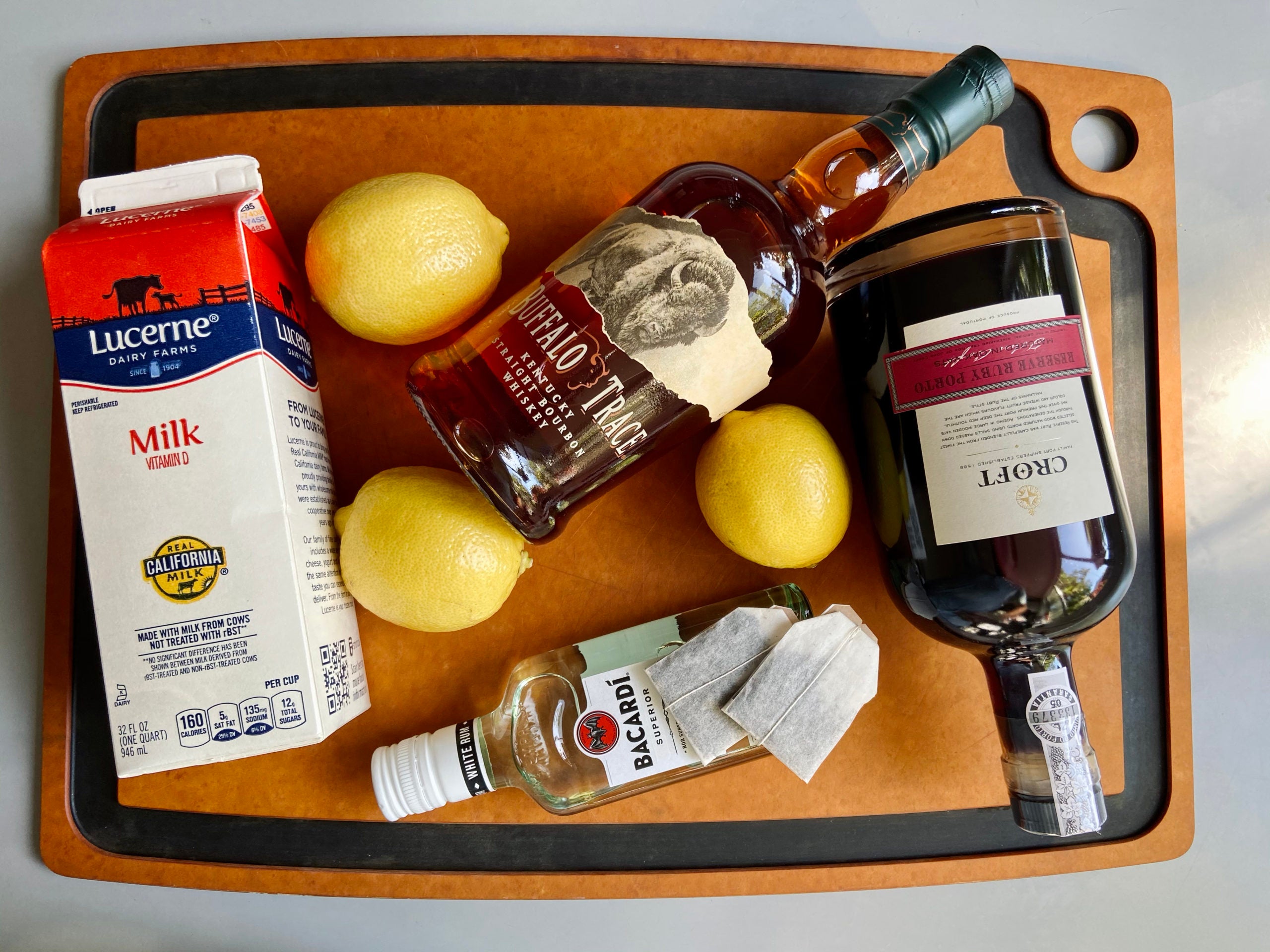
My favorite version is a riff on this beautiful black tea-port punch devised by Dan Souza of Cook’s Illustrated, which is itself a derivative of an old Thomas recipe. The main flavorings remain the same: Black tea, ruby port wine and lemon juice. But I’m stripping out Batavia arrack, a rum-like booze made from sugarcane and red rice, and replacing it with a mix of bourbon and white rum, swapping the smoky savoriness of the arrack for a more autumnal brown spirit. I also add a touch of orange juice and, crucially, oleo saccharum — Latin for “oily sugar,” made by muddling lemon zest with white sugar until the citrus oils are released and the sugar turns wet.
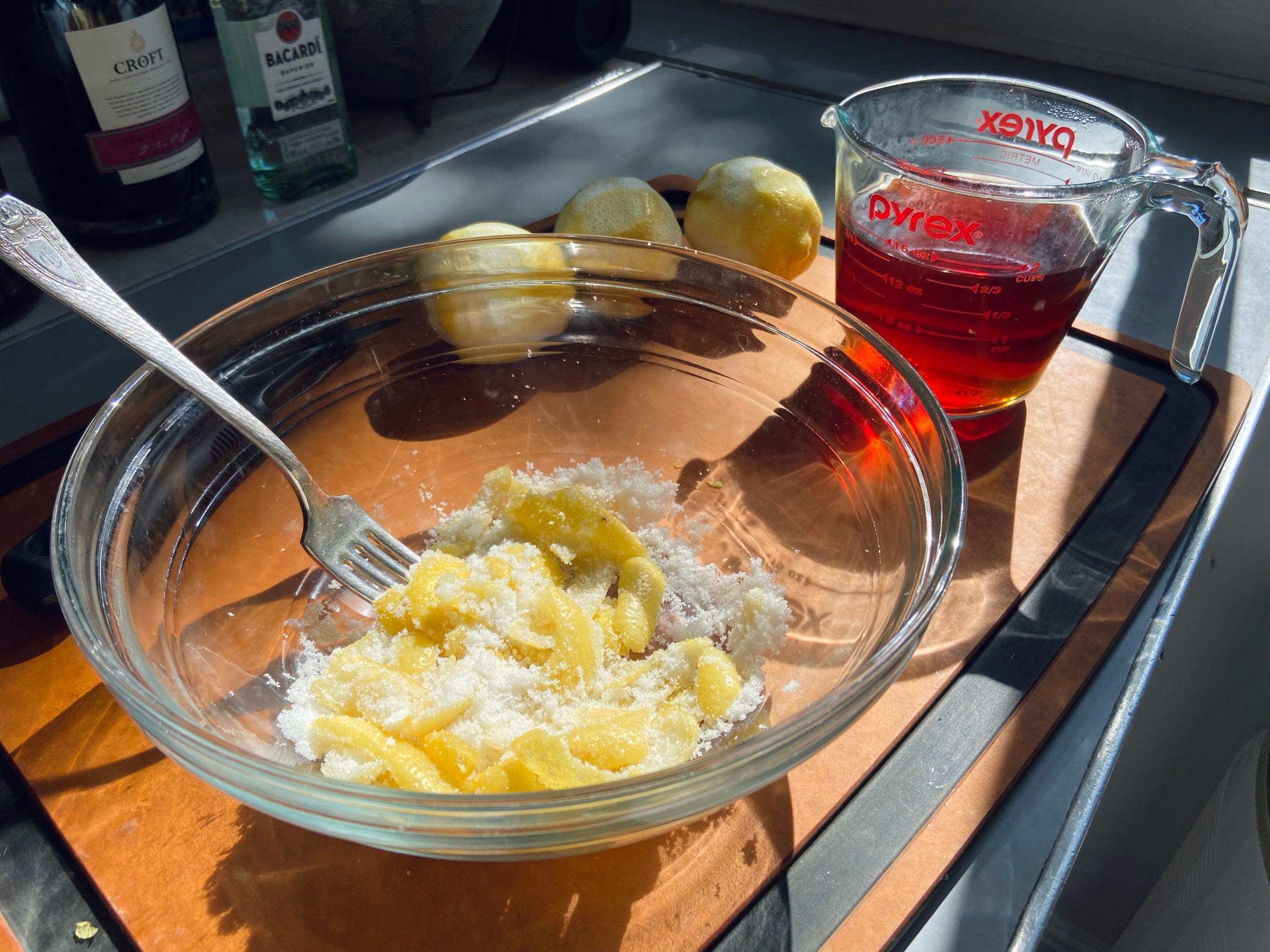
You mix these ingredients together, then stream it into a bowl with a cup of whole milk, stirring the entire time. It’s horrifying to witness: a perfectly good punch, turning into what looks like bloody puke as the acid curdles the proteins in the milk, creating little snotty chunks of dairy. Once you filter it through cheesecloth, however, the alchemy begins. The curdling pulls all kinds of impurities and flavor molecules out of the solution, and as the liquid passes through the “raft” of curds, it turns into a glowing, crystalline rose color.
The result? A luscious, floral drink that’s as addictive to stare at as it is to sip. The flavor is surprisingly elegant, with no single ingredient sticking out, despite the strength of flavors like black tea and port. Best of all, while the recipe below is perfect for a few rounds between two people (it yields around four cups), you can multiply the quantities to make larger batches. Trust me, nothing impresses a crowd like bringing out a punch bowl full of this stuff.
Milk Punch: The Ingredients
1 cup of milk, poured into a pitcher or large (eight-cup) measuring cup
2 cups brewed black tea
2/3 cup ruby port
2/3 cup bourbon
1/3 cup white rum
1/3 cup lemon juice
1/3 cup orange juice
1/3 cup white sugar
2 teaspoons grated nutmeg
1 teaspoon salt
Zest from three lemons
(You’ll also need a fine mesh strainer and cheesecloth or basket-style coffee filters.)
To begin, zest your lemons with a vegetable peeler, carefully cutting strips off the fruit while leaving the bitter white pith behind. Toss these in the bottom of a mixing bowl or pitcher with the white sugar, then muddle them together until the zest is fragrant and the sugar takes on moisture.
Add all of the remaining liquid ingredients except for the milk, which should be in a separate bowl or pitcher. Stir to dissolve the sugar, then carefully pour the cocktail mixture into the milk while stirring slowly. Let the mixture rest for at least 30 minutes and longer if possible; leaving it for a few hours (or even overnight) in the fridge will help speed up your filtration.
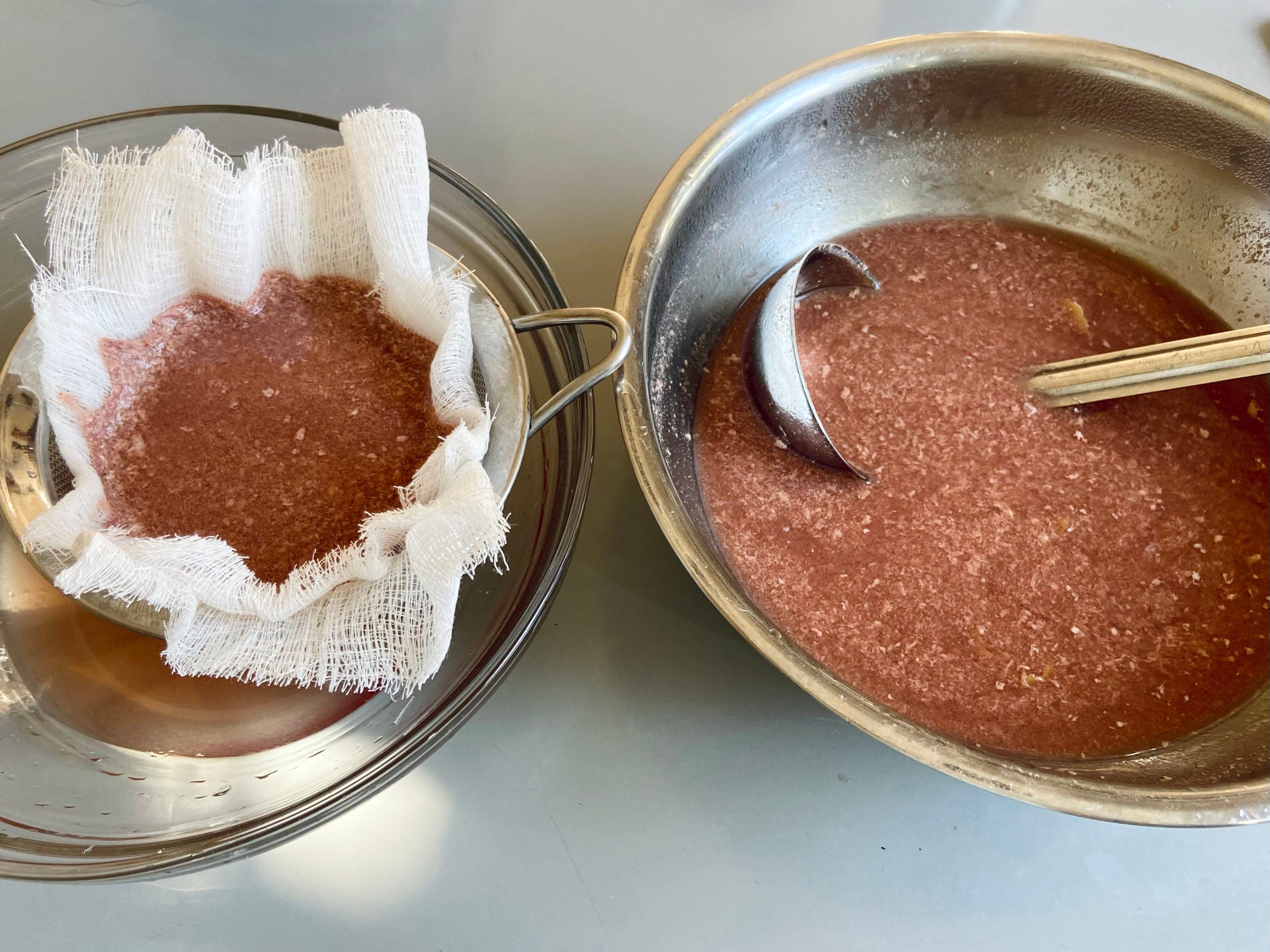
When you’re ready to clarify, line the inside of a fine mesh strainer with a triple layer of cheesecloth or a basket-style coffee filter (if it fits). Place this over a clean pitcher or bowl, then carefully pour the curdled liquid into the filter, using a ladle if necessary. Don’t fuss with the curds that collect in the filter, as this “raft” of clumpy dairy is essential to getting a crystalline final product. I like to use a cheesecloth filter first, then pass the liquid through a paper pourover coffee filter, but you can simply pour the liquid through the strainer of curds two or three times.
Again, I promise that you’re gonna be left with a gorgeous blush-pink liquid that looks like wine but tastes like a holiday.
